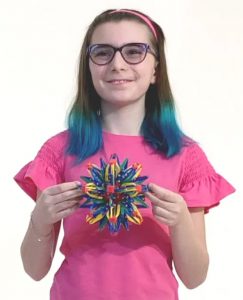This lesson introduces two of our body’s most basic nervous system communication networks: the afferent and efferent systems. The lesson incorporates a brain science video lesson, student leadership, a simple movement practice, and a progressive relaxation.
Let’s Explore: The Amazing Human Nervous System
Practice: Student Leads Calming Chime or Breathing Sphere, Followed by Compliments
Follow Along: The Amazing Human Nervous System
Learn More
Efferent & Afferent Labeling Activity (grades 1+)
Efferent & Afferent Drawing Activity (grades 1+)
Lesson Plan Summary
Summary
This lesson introduces two basic nervous system communication networks: the afferent and efferent systems. The lesson incorporates student leadership, a simple movement practice, and a progressive relaxation.
Time
17-27 minutes
Lesson Objectives
- Students will be able to identify that the brain and spinal cord are the center of the nervous system
- Students will be able to distinguish, explain, and give examples of afferent and efferent pathways of communication in the nervous system
- Students will be able to identify the central and peripheral nervous systems
- Students will explore and be able to identify their own afferent and efferent communication through basic movement practice
- Students will learn a basic movement routine for developing strength, mindfulness, and sensory awareness
- Students will participate in and experience a progressive relaxation
Key Vocabulary
The Nervous System: (noun) The group of nerve cells that sends nerve messages between parts of the body
Network: (noun) A group of interconnected things
System: (noun) A set of connected things that form a complex unit
Communication: (noun) Exchange of information
Central Nervous System: The brain and spinal cord
Peripheral Nervous System: Communication that happens in other parts of the body extending from the brain and spinal cord
Afferent: (adjective) Body to central nervous system communication
Efferent: (adjective) Central nervous system to body communication
Sensory Messages: Afferent messages received from the five senses and sent to the brain
Motor Messages: Efferent messages sent from the brain to tell the muscles in the body how to move
Brain: The organ, protected by the skull, in control of the nervous system, intelligence, and sensory information
Spinal Cord: A long, thin structure that extends from the brainstem to the lower spine. The spinal cord and the brain make up the central nervous system
The Five Senses: Sight, sound, touch, taste, and smell
Materials
- Video projection system with internet access and speakers
- Videos:
- Calming Chime & Hoberman Breathing sphere
- The Amazing Human Nervous System brain science (BS) video with Mandy and Junebug
- The Amazing Human Nervous System (FAV) follow-along movement/mindfulness practice video (FAV). Features beginning sequence with focus on afferent and efferent pathways
- Discussion Questions
- Handouts
-
- Efferent & Afferent Labeling Activity (grades 1+).
- Efferent & Afferent Drawing Activity (grades 1+)
-
Directions
- Student(s) lead Calming Chime and/or Hoberman Sphere Breathing exercise with class (2-3 mins)
- After #1, student leader chooses two to three classmates to give compliments (1 min)
- Play health science video: The Amazing Human Nervous System (BS) (7 mins)
- Class practices follow-along video: The Amazing Human Nervous System (FAV) (7 mins)
- Class reviews handouts & engages in discussion (optional – 10 mins)
- Lesson extension (all grades): Have students create their own movement sequences from poses in the Move Mindfully card deck (optional – 10 mins)
- Lesson extension (all grades): Have students create their own relaxation journey similar to those in the Mindful Moments card deck (optional – 10 mins)
Skills Developed & Other Benefits
- Continued development and improvement of skills:
- Mindful listening
- Sensory/self-awareness
- Patience
- Leadership skills
- Nervous system regulation
- Self-control
- Leadership skills
- Teamwork skills
- In addition to being able to identify the types of nervous system communication, students will physically experience afferent and efferent communication through movement
- Students benefit from the proprioceptive input that poses provide in the form of moving the body against resistance; this provides stimulation to the muscles and joints that can be calming and organizing to the nervous system
Reflections & Feedback for this Module?


